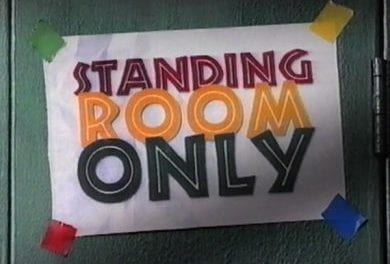Create an individualized marketing campaign with these simple steps.
By Pam McDonald
For years as a marketing consultant, my overarching concern was results. When I developed marketing plans, I wanted a positive answer to the big question – did it work? And just like Colonel John (Hannibal) Smith of TVs A Team, I was exhilirated when I could say: “I love it when a plan comes together.”
I’m pretty sure Paul Flowers, President of Circa 46, an advertising agency in the senior living space and a Senior Housing Forum Partner, gets the same kind of thrill, because I could hear it in his voice when he shared one of his client’s recent success stories.
Paul and his team at Circa 46 were working with the Parsons Group, a family-owned senior living operator with five communities in California and Texas, each unique in terms of its location, size, and service levels provided – from independent, to assisted living, to memory care. All are located in metropolitan areas that have more competing senior housing options and higher advertising media costs.
“We knew a one-size-fits-all marketing communications approach would not be effective,” Paul stated. “Our challenge was to develop a plan that would allow each community to effectively compete in its service area while maintaining an affordable advertising level.”
Recognizing that a majority of senior living prospects begin their search for suitable housing on the internet, Paul’s team set three goals for the online campaign that would be most effective for prospects who were actively looking. The directives for the plan were:
- Be Focused
Paul said, “Multiple research studies have demonstrated that most senior housing residents move to communities near their current residence. We determined that advertising for the Parsons Group communities should be focused within a ten-mile radius around each location, which would reasonably cover the majority of bona fide prospects.
“While media costs certainly influenced our approach, the bigger focus was efficiency,” Paul said. “We wanted to make sure every dollar committed to advertising was productive. Rather than blanketing the markets with advertising – or even using direct mail to target seniors (86% of whom are not even open to considering senior living according to AARP) – we focused on those prospects who were actively looking at senior living options. And only paid for prospects who actually visited a Parsons Group community website.”
- Be Findable Paul explained that the main thrust of the campaign was pay-per-click search marketing, primarily using Google AdWords. “As prospects begin their search for senior housing online, we make sure ads for each location appear on the search results with messages that clearly explain what each community is about,” he said. “The goal is to motivate the right prospects to click on the search engine ad, which takes them to the community website. At the same time, we ferret out those searchers who would not be good candidates, so we don’t pay for website visits by those unsuitable candidates.”
- Be Compelling Paul noted, “We crafted an individual brand promise for each community based on their unique qualities and characteristics – hence we developed specific messaging for each community’s website. This required us to review their competition within ten-miles and identify what made each Parsons Group community different and better than their competitors. “We clearly placed those messages on the community’s home pages and then reinforced them throughout the websites. Our ultimate goal is to motivate website visitors to click through to the Contact page and take the next step: obtaining more information via a telephone call, online inquiry or personal visit to a Parsons Group community.”
Campaign Results
The campaign is increasing website visits from 44% to 62% – and the incremental visits are viable prospects who are responding to the targeted messaging via the targeted pay-per-click search ad delivery.
More important, the number of prospects who click through to the Contact page is 42% to 60% higher – this suggests the Parsons Group community has been established in those prospects’ consideration sets.
Finally, 46% to 55% of website visitors who click through to the Contact page, go there directly from the community’s home page. This behavior indicates that the brand promise makes a strong first impression that quickly convinces prospects the community is worth further investigation.
Now that’s a plan that has come together!
Download an overview of Circa 46 here; it includes their 6-point framework for approaching senior housing marketing.








